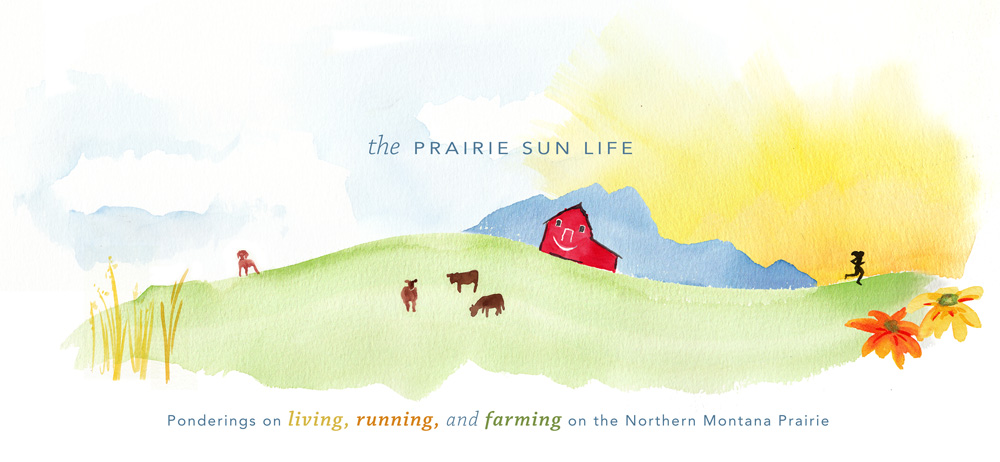These days, my most important daily chore cannot be so casually brushed aside. It is my daily responsibility to feed our orphaned twin-calf, Daisy. Since she may end up being in my freezer, I probably should have selected a less-cutesy name and gone with something like, “T-bone,” or “Brisket,” instead, to remind me she is destined for human consumption and not to become too attached. If only it were a male calf, I could have named him Chuck.
So, why exactly do we have this extra calf? At calving time, in the uncommon event that twins are born, often both calves do not ultimately stay with the same mama. Typically, at least one calf out of all the other calves born that spring does not make it for one reason or another. In this case, a twin-calf could be separated from its birth mama and “grafted” with the cow who lost her calf. This year at the end of the season, our set of twins was still a set. Most cows cannot support raising twins. They simply do not produce enough milk to bring both calves to appropriate weaning weight. So Daisy was pulled off her mama and we now feed her. She’s destined to become our fat-beef for the year, or, to sub in for a smaller calf in our load of calves that will ship this October.
Read herehttp://prairieponderingsmt.blogspot.com/2013/07/calf-sale.html for a post on our calves selling a few weeks ago!
And that’s how Daisy came to live at our house.
No, she doesn’t actually live in our house. Could you imagine setting the table for two humans and a red Simmental-Angus calf? I bet she would be even less polite about begging for food than Harvey, not to mention the mess! Best not to think about that too much.
Daisy lives in the small pasture adjacent to our yard. I feed her something called Milk Replacer every day, usually in the evening. It’s essentially baby formula, only created for calves and other animals. It’s mixed proportionally with water in a bucket with a nipple on the end, which acts just like a mama cow’s udder.
Daisy gets pretty insistent when it gets close to the time of day she usually gets fed. For a small creature, she can be pretty loud. I think her moo sounds a lot like a full-grown cow and not so much like a calf. She comes right up to the fence and bellows. I may be irregular about the time that I feed her, but she does get fed every day. Sometimes it’s right when I get home from work, around 5:00pm… and sometimes it’s closer to 9:00pm, depending on the evening’s activities. One thing is for sure, I don’t have the option of lounging in a recliner with a snack and “forgetting” to feed the calf.
Here's pictorial progression of Daisy's nightly nourishment routine!
This is the bag of "Calf Formula," if you will.
This is the feeding vessel.

Milk Replacer formula goes into the bucket and is mixed with hot water and...

Voila! We now have feed-able milk replacer!
Can you believe I was an intern at Burberry?! I'm a long way from my Fashion Design days out here. It's best to wear long pants and long sleeves primarily so you're less bothered by mosquitos, but also because the grass is itchy against bare skin. It's perhaps hard to tell in this photo, but I typically also wear tall cowboy boots or rubber muck boots. Reasons for this include protection from mosquitos, itchy grass, and rattlesnakes (oh my!) and also because Daisy tends to slop milk out of the bucket onto my feet.
When it gets to be the time of night she typically gets fed, she comes right up to the fence and starts really bawling and asking for it. Look at her! She looks like a crack hound needing a fix, no?
It takes about five minutes for her to suck down a pail of milk. Then, the little bit leftover goes to Harvey. We call it his "Milk Treat." He loves it.
Harvey licks out every last drop!
After Daisy gets fed and Harvey gets his Milk Treat, we often go for a short sunset stroll down the road. Can you see Harvey at the edge of this wheat field?
Unobstructed sunsets are a major perk living out here!









No comments:
Post a Comment
Thanks for reading my blog! I would love to hear what you think of this post in your comments.